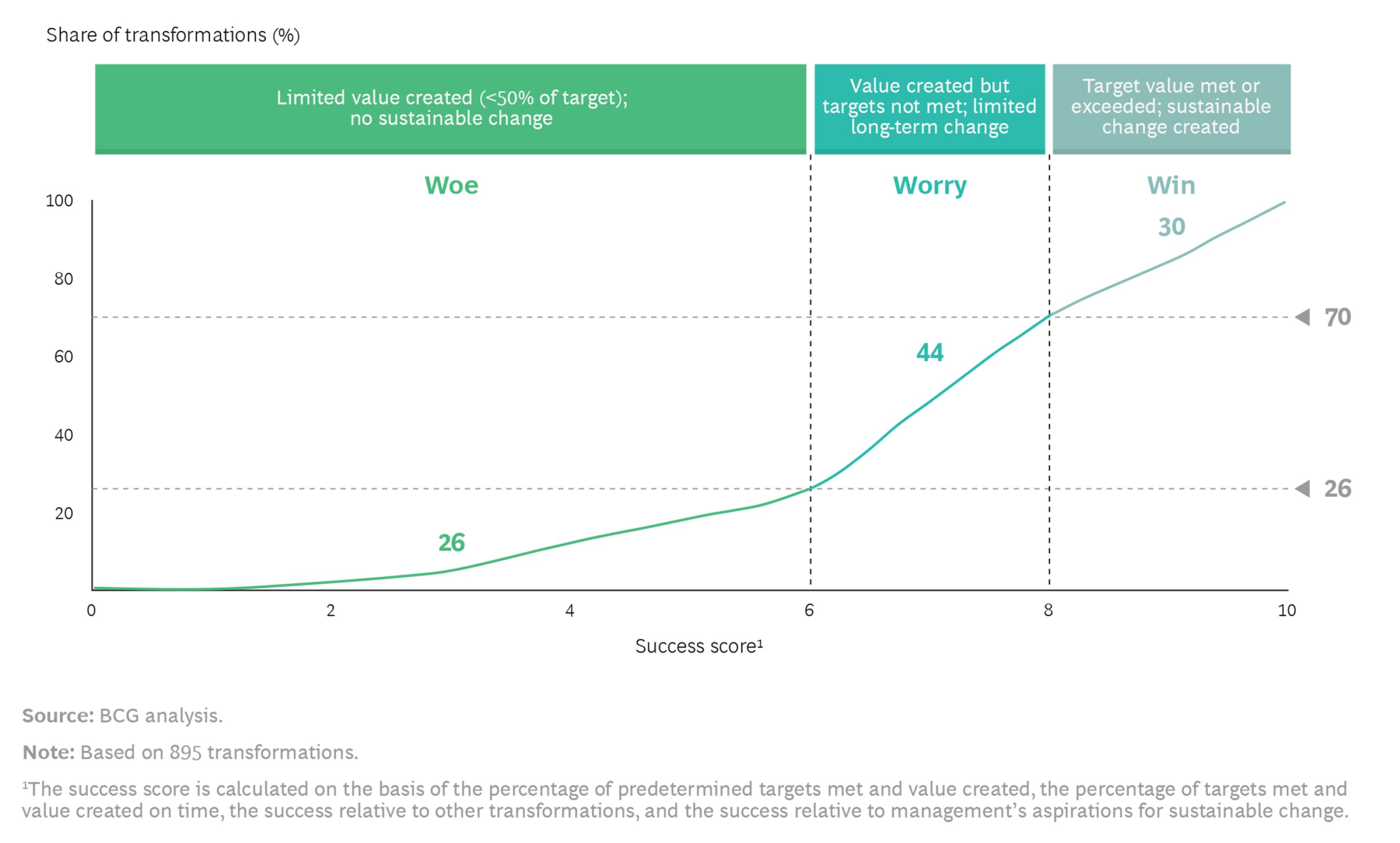We break down how digital transformation impacts your business, why your business must embrace it, and how to prepare your company accordingly.
In what has been dubbed the 4th Industrial Revolution, technology is rapidly changing just about every aspect of business and consumer behavior. The digital era is upon us—and it’s here to stay. Across the board, tech has had a profound impact on both the B2B and B2C realms. To keep up, companies must align their operations with the demands of today’s digitally-driven society.
This dramatic shift toward new tools and processes is part of the overall movement toward digital transformation. This article defines what digital transformation is, why your business must embrace it, and how to prepare your company accordingly.
What is Digital Transformation?
As a whole, ‘digital transformation’ can be regarded as the progress society is making towards an interconnected digital world. We circumvent the limitations of brick-and-mortar by shopping online, on-demand, and with instant delivery. We consume information on our mobile devices, favoring dynamic digital content over static print. Phone calls, letters, and faxes are being replaced by online chat, video conferencing, email, social, and text messages.
These changes, made possible by increasingly accessible and convenient technology, represent the digital transformation of society. Businesses are adapting to this increasingly digital world by implementing new technologies across every department. A digitally transformed business recognizes the inherent risks that come with radical change but understands the necessity of this progression.
Take Lego, for example. Sensing a shift in consumer demand from physical toys to digital entertainment, their business model needed to change. Leveraging decades-long experience in children’s entertainment, Lego has created a catalog of mobile apps, video games, digital films, and streaming content that aligns with a new generation of digitally-enabled consumers.
Another example is Under Armour’s mobile app, Connected Fitness. In response to consumers’ desire for more data-driven fitness, Connected Fitness allows users to track the impact of exercise and diet in pursuit of specific goals. This user data subsequently informs product design, enhancing the quality of their sportswear.
Digital Transformation Is More Than Just Digitalization
A common misconception among business leaders is to view digital transformation strictly in terms of “digitalization.” Digitalization (in this context) refers to the use of technology to streamline business processes. For example, companies can now use marketing automation software to schedule and manage marketing tasks from a single hub. The end-goal of digitalization is efficiency, with processes requiring less manual input.
What many business leaders fail to realize is that digitalization is just one piece of digital transformation. A complete digital transformation requires a cultural shift in which all stakeholders see technology and data as indispensable. Lego and Under Armour engaged in digitalization by entering the mobile application space, but embraced digital transformation by making such technologies a core part of their business.
“When digital transformation is done right, it’s like a caterpillar turning into a butterfly, but when done wrong, all you have is a really fast caterpillar.” – George Westerman, MIT Center for Digital Business
Data: The Fuel for Digital Transformation
While the industrial revolution focused on manufacturing efficiency and volume, digital transformation is all about data. A digitally enabled business collects data from numerous sources and then shares that data across business units.
Companies can now gather deep, insightful data like never before. This data can empower organizations with more accurate buyer personas, audience segments, predictive analytics, and much more. Data can also guide product development. Through intelligent data leveraging, companies can assess what the market is yearning for. The level of success of a product can then inform whether data-driven assessments were correct, which allows for a cycle of constant improvement.
The digital transformation of a business is an overhaul of both processes and culture. The importance of technology and data is recognized across the organization, and a unified effort is made to allocate resources in the pursuit of becoming data-centric.
Related: 6 Steps to a Successful Digital Sales Transformation
Why is Digital Transformation Important?
As society continuously integrates the use of complex technology, the question is not if technology will impact our lives, but how. The same way hunting-gathering societies were phased out after the rise of civilization, a business’s failure to embrace the digital era will result in irrelevance and, ultimately, extinction.
Another consideration is the changing workforce demography. The wave of retiring baby boomers—a “hands-on” generation who thrived in the manufacturing economy—will create labor shortages in more traditional, non-digitalized businesses. These shortages will be compounded by a new workforce (Millenials and Gen Z) that is reluctant to engage in outdated, manual tasks. Instead, the younger generation is placing an emphasis on digital skills more suitable for the age of technology.
We Now Live in the Knowledge-Economy
Success in business used to rely on achieving production efficiency to secure a dominant market share. With globalization and technology breaking down barriers to entry, the resulting increase in consumer choice has transformed the rules of competition. Today’s winning businesses leverage critical, actionable information to create a competitive advantage. This is what is known as the knowledge economy.

A critical shift that comes with the knowledge economy is the role of specialization. In the manufacturing economy, product specialization was seen as a production-capping bottleneck. In the knowledge economy, specialization is the way to carve out a loyal customer base in a hypercompetitive marketplace. The easiest and most sustainable way to attain this specialization is by leveraging tech.
Take, for example, a SaaS startup in a marketplace dominated by larger companies. The startup can analyze CRM data, blogs, forums, and social media to determine what the market is “saying.” Using this insight, the startup can develop a niche software solution and promote it with a data-backed marketing strategy, securing a competitive advantage over bigger rivals. From this example, we can see how harnessing data and technology, and pushing for digital transformation can enable the specialization necessary to survive in this new knowledge economy.
Digital Transformation in Sales
How is the digital uprising, and the concurrent shift to the knowledge economy, impacting the sales environment? A staggering 57% of the buyers’ journey is happening online. When evaluating an organization’s products, a potential buyer will independently sift through the organization’s content (blog posts, white papers, and case studies), corroborating this information against other online sources.
The sheer amount of information available to consumers, as well as enhanced consumer choice brought about by hyper-competition, makes the digital consumer resistant to interacting with your sales reps. This empowered consumer wants to choose exactly when and how they want to engage with your organization.
“We should no longer be talking about ‘digital marketing’ but marketing in a digital world.” – Keith Weed, Unilever
When the potential customer does reach out, Sales is faced with the task of converting a prospect who’s already inundated with other sales messages vying for their attention. They will expect your sales reps to be familiar with their organization’s market space and challenges, and demand to know exactly how your product/service will help them. Sales teams need to be smarter when it comes to serving the new digital consumer. Leveraging digital channels to gather data on potential customers affords a level of understanding that can be used to provide a superior buying experience. By providing a personalized approach, sales teams can be the engines of specialization that will catapult their organizations to success in the knowledge economy.
Table: Only 30% of digital transformations are successful
Related: How to Manage a Remote Sales Team
5 Essential Components of Digital Transformation
Now that we understand what digital transformation is—and why it’s important—how can your organization start the process of digital transformation? Companies need to think carefully about the transformation they are attempting. A clearly defined business strategy needs to be decided upon with all stakeholders before investing any resources. Your organization’s broader business strategy should be the guiding force of your digital sales transformation journey. From there, developing and executing the changes will be easier to manage.
1) Objectives: Set Clear Objectives and Key Performance Indicators (KPIs)
The biggest reason digital transformation initiatives fail is that most organizations lack clearly defined objectives that align with that business’s broader strategy and goals. The purpose of transforming Sales, or even an aspect of Sales, should be to solve at least one of the higher business goals in the organization.
Taking on digital sales transformation is overwhelming for sales leaders. In the journey itself, many sales leaders forget one essential component in their digital transformation initiative: maintaining a data-driven mindset throughout the entire transformation journey. This includes setting benchmarks in the beginning and utilizing Key Performance Indicators (KPIs) to guide your progress.
Gartner reported that nearly half of companies undergoing digital transformation projects have no metrics or KPIs established.
Leading with a data-driven mindset will increase efficiency and agility throughout every step in the journey. KPIs must be created, continuously monitored, and be relevant to the objective. Only then can a KPI be a good indicator of success. Your digital sales transformation objectives should center around accelerating the buyer journey and improving that experience. As we reviewed in the previous section, focusing on improving the customer journey will also create objectives that span into both Marketing and Customer Success. This type of objective setting is healthy for the organization. Although it will cause a more complicated process, it can make a much more significant impact on higher-level business objectives.
2) Process: Define Your Lead to Revenue Process
The next step is to begin to identify and then refine your digital process. Consider in-depth customer interviews to help you learn where your current sales process might have gaps or weaknesses. Start to look at simple or transactional tasks first. These tasks can quickly be automated, and can almost immediately support the enablement of your people. Ask your current customers for feedback on your business’s strengths and weaknesses.
If that isn’t possible, consider using focus groups of your ideal customer profile to identify potential gaps in your sales process and the overall buyer experience. What questions are they left to figure out? Where are they looking for more or less engagement from sales? Is there a gap in skills that you can identify? Digital transformation in Sales should always begin with a diagnostic type of assessment to understand what phase in the sales process might require more investment and resources.
Once you identify gaps or weaknesses in your current sales process, consider taking a multi-phase approach in your transformation. Every Sales organization has some sales process they follow. Consider mapping each of the proposed stages to your sales process, and then map them so they align with your customer journey.
A multi-phase transformational approach allows you to break the larger project into smaller, more manageable steps. Don’t forget to work with Marketing, Customer Success, and other departments that have an impact on your sales organization. Both handoffs are critical to the success of the organization. Each department can benefit from each other’s insights when a process is followed and measured. Working with Marketing and Customer Success will give you the resources you need to enhance the customer experience. Marketing has a significant role to play in a digital engagement strategy, and sales should make sure they are leveraging their resources.
3) People: Identify Talents and Provide Support
Digital transformation is driven by people and supported by culture. It will require alignment across different levels of your sales organization as well as collaboration across departments and business units. Communication will be critical to help your organization navigate the challenges that digital can present as well as a commitment to change when challenges seem daunting or alignment unreachable.
Many employees often fear digital transformation because many still believe that going digital means losing their jobs to automation. Sales leaders must create a supportive organizational culture that fosters the willingness to adapt to change. Communicate with your sales reps that undergoing a digital sales transformation will not take their jobs away. They’ll learn new selling skills, and potentially new sales technology expertise that will prepare them for any future sales role. Helping them see the potential for increased sales and commissions will garner their buy-in to transform sales into an intelligent, digital-first sales model.
Once you have buy-in from your stakeholders and your team, you can start by identifying what expertise you may already have on your side. Rely on those experts who may have already gone through a digital sales transformation at a previous job or who have in-depth industry knowledge in a particular segment. They could help you make informed decisions by sharing what may or may not work to help avoid any possible setbacks.
Some members of your organization will adapt quickly and will help support the changing dynamics within each role. You may also have sales reps that will take longer to grasp new digital sales concepts. A large part of your transformation journey should include investment in training your sales reps on the fundamentals of your customer journey and sales process. Does your organization have a sales enablement team that can help develop training materials? If not, bring in inside sales experts to help train your reps for success.
4) Technology: Use Technology to Enhance People and Process
Most organizations believe that digital transformation happens simply by adopting new technology and creating simple automation. That is where many organizations fail to make change successful. Technology Will not fix broken processes or alleviate the need for training your people. It should only be applied to enable new capabilities for your people or enhance a current process. Once you have defined your process, you can determine if your existing tech stack will integrate with your established process and business objectives
Technology should first focus on enabling the front lines of your sales organization rather than merely being a tool to manage and monitor their activities. Take time to understand what a day looks like for each of the roles within your sales organization. Use feedback from your team to better understand the sticking points and challenges they face in completing their job each day. Also, construct a technology stack with a holistic view and make sure to confirm that each layer of technology that you add will work with your existing solutions.
Shy away from trying to find a single solution that solves all of your problems. Instead, look for solutions that build out a complete ecosystem for your sellers and service teams combined. Keep in mind that your data, and typically your CRM, are at the foundation of this technology stack. When evaluating tools, make sure to develop a diverse buying group that can represent the user, the manager, the technical administrator, and the security and compliance officer to support any changes. Technology should simplify agent workflows. Simplifying basic things like the number of platforms, logins, and windows needed to perform their daily jobs should be limited as much as possible.
5) Results: Measure What Matters
Engage your executive team or board members to find out what is important at a top-level. Leadership will often look at high-level metrics associated with benefits, costs, and risks when looking to track progress following a digital transformation plan.
Digital initiatives are the top priority for 2019, according to Gartner’s latest CIO survey. Only 4% of organizations have no digital initiative at all, which signals a shift from digital as an option to digital as a mainstream platform.
To accomplish this, you will need a set of key performance indicators(KPIs) to measure digital transformation progress. Work to keep it simple when it comes to measuring and monitoring digital KPIs. Pick Four to eight KPIs to measure and report on to monitor progress toward your objective. Make sure all departments align on a single point of truth at the start of an initiative, and throughout the transformation process.
When defining KPIs, look at the specifics of your organization. KPIs should not come from a pre-set list—instead, they should be customized to fit your specific objectives. That said, we have a few guidelines or questions for you to consider.
- What KPIs and metrics are you measuring to track results?
- Did you establish a benchmark to measure progress?
- How do the KPIs align with your desired business outcomes?
It is important to note that not all initiatives may have an absolute goal of 100%. Take this into consideration when tracking toward objectives. For example, a KPI may be to increase digital touchpoints across your outbound prospecting cadence by 50%. You may not want to exceed 50% because of the known effectiveness of direct mail or phone outreach in your specific target market.
Learn More: KPIs Sales Managers Should Use to Track Field Agents Right Now
The Challenges of Digital Transformation
You will almost certainly encounter a degree of resistance during your digital transformation journey. In fact, 84% of digital transformation projects fail. Here are the challenges you will face as you undergo a digital transformation:
Misalignment with the overall business strategy
With our limited capacity for concentration, it is easy to compartmentalize our digital transformation efforts to just the needs of one or a few departments. As a result, digital transformation efforts do not align with the overall business strategy, causing executives to lose faith in the project. Aligning on top business goals, as well as the customer experience provided, is a sure-fire way to address this challenge.
Lack of support from key executives
Digital transformation is a mental shift that goes beyond digitalization. This shift only happens when executive leadership is on board. While a single department can spur digital transformation, it will require the collective effort of all departments to face the coming challenges head-on.
Resistance to change
Change is inevitable, but it is not easy. Digital transformation requires people who are willing to adopt new ways of working. Remember, digital transformation is not the same as digitalization. It’s not just about automating recruitment or invoicing—it’s also about convincing workers to see technology as an ally.
Considering the job done after launch.
Many organizations plan exclusively for the launch of digital transformation, but fail to establish mechanisms for measuring success and scalability. Not establishing feedback systems for your digital transformation efforts will hinder improvement and refinement, which can cause your transformation efforts to fall short.
In conclusion, addressing these challenges is critical to the success of your organization’s digital transformation. To help you navigate the complexities, we’ve created an interactive workbook designed to support modern sales organizations in the pursuit of digital transformation. Are you ready to be the catalyst in your company’s digital evolution?





